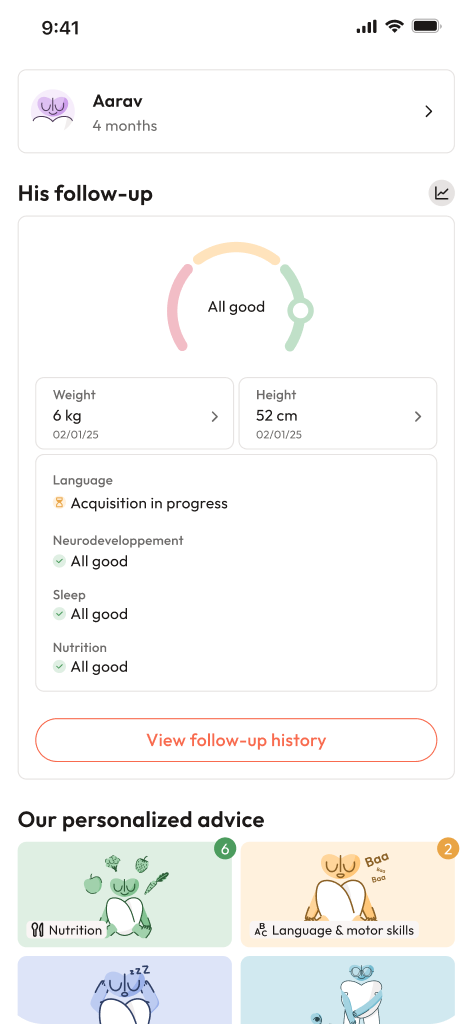Navigating those last weeks of pregnancy can feel a bit like standing at the edge of a major adventure—anticipation, hope, and maybe a dash of anxiety, all blended together. Parents, you may find yourselves constantly questioning every little cramp, twinge, and ripple of discomfort, wondering: is this it? Or am I being hasty? Understanding When to go to the maternity ward—recognising the right signs, acting without panic when needed, and preparing for both common and unexpected situations—brings clarity and assurance amidst the uncertainty. This exploration untangles those worries, blending medical insights and practical advice: spotting real labour, distinguishing harmless symptoms from warning signs, decoding the “5-1-1 rule,” and understanding the landscape of hospital care. Ready to feel more at ease as the big day inches closer? Let’s break down the essentials together.
Recognising the right moment: understanding signs and timing
Not all discomfort calls for grabbing your hospital bag and making a dash. But some signals should lead straight to action. How do you distinguish between ordinary, late-pregnancy restlessness and genuine labour? Let’s break this down.
The “5-1-1 rule” is your golden compass for When to go to the maternity ward: when contractions arrive every 5 minutes, each lasting 1 minute, and the pattern continues for at least 1 hour. These are not those vague tightenings you might have known before—real contractions build in intensity, cannot be eased by rest, hydration, or shifting position, and start out in the lower back before wrapping around the abdomen. Imagine your body as an orchestra conductor: erratic rehearsal versus a true performance. Regular, rhythmic signals mean the main event might just have started.
Loss of amniotic fluid—‘waters breaking’—is another decisive marker. Sometimes it’s a dramatic gush, at times a slow trickle, often colourless but occasionally tinged with pink. If the fluid is clear, you generally have a window (about two hours) to get organised—grab a shower, nibble something light, or wait for your partner. However, if the fluid turns green, brown, has a dark hue, or carries an unusual, foul odour, don’t linger. These tones can reveal meconium in the fluid—an indicator of potential foetal distress—and mean you should head to the maternity unit without delay.
Have you experienced bleeding? This always answers the When to go to the maternity ward question with urgency—even for minor spotting. Bleeding can be benign but demands professional eyes to exclude placental issues or other complications.
Shedding the mucous plug suggests things are progressing, but—unless accompanied by regular contractions—there’s usually no need for a speedy hospital trip just yet. Still, stay alert.
If you spot any of these: severe abdominal pain, sharp reduction or absence of foetal movement (especially after 26 weeks), unrelenting headache, blurred vision, sudden and marked swelling, high fever, difficulty breathing, or strong urge to push, forget hesitation. These are the red flags and mean When to go to the maternity ward is right now.
Differentiating true labour from practice waves
Ever had “practice” contractions—those irregular, mild squeeze-and-release sensations across your belly? Braxton Hicks, as caregivers call them, are notoriously deceptive. They usually disappear with rest, hydration, or changing positions. True labour, in contrast, is relentless, grows stronger, has a predictable rhythm, and eventually leads to cervical dilation (the process your doctor will check upon arrival). If a warm bath or lying down settles things down, it’s most likely a false alarm. If everything intensifies, and the timer on your phone confirms the pattern, it’s probably time for When to go to the maternity ward.
Special circumstances and high-risk situations
Pregnancies come with infinite variations—some unfold with routine calm, while others require a more watchful eye. Preterm labour (before 37 weeks), multiple pregnancies, high blood pressure, or diabetes—each amplifies monitoring needs. Spotting any signs of premature contractions, fluid loss, bleeding, or decreased foetal movement? Early evaluation makes a difference. Your caregiver may recommend specific antenatal care routines or arrange more frequent check-ins to catch trouble early, always keeping the timing and circumstances of When to go to the maternity ward front of mind.
What really happens in the maternity ward?
Picture a space buzzing gently with anticipation, led by a team well-versed in both routine and the unexpected. Maternity wards are designed for continuous monitoring: contraction patterns get charted, foetal heart rates are observed, and options like epidurals or other pain relief are discussed. Skilled staff stand ready for vaginal or caesarean births, and a neonatal team is nearby for any baby needing special attention. Admission at the right moment optimises both maternal and neonatal outcomes—hitting the balance between unnecessary stress and timely intervention.
Typical assessments include:
- Asking detailed questions about your symptoms and contraction rhythm
- Checking blood pressure (which can reveal hidden troubles like pre-eclampsia)
- Performing foetal monitoring to chart heartbeat patterns and oxygenation
- Cervical examination, especially if contractions are regular
If labour isn’t quite established and safety isn’t at stake, you might be encouraged to return home for comfort—and less risk of unnecessary interventions.
Risks of arriving too soon or too late
It’s tempting to rush as soon as something feels off. Yet, arriving too early—before labour is established—frequently leads to extra interventions (IVs, repeated exams, even feeling like you’re “on the clock”), which can increase emotional stress. On the other hand, waiting too long can result in missing out on pain management options, delayed monitoring of complications, or even “precipitous” deliveries on the way. The art lies in recognising your body’s signals, staying in close contact with your care team, and applying principles like the 5-1-1 rule for deciding When to go to the maternity ward.
Preparing for your maternity ward stay
Organisation alleviates half the worry. In the second trimester, focus on regular check-ups and prenatal classes. As the due date nears, keep your hospital bag packed and ready:
- Comfortable clothes, toiletries, and any regular medications
- Copies of all medical records, ultrasounds, and your blood group card
- Nutrition bars or snacks for energy
- Items for your newborn: soft cotton outfits, gentle wipes, diapers, and rash cream
Don’t forget backup childcare plans if needed, and keep transport arrangements flexible. A checklist—sticking to the essentials but leaving room for a reassuring comfort item or two—provides peace of mind on the threshold of When to go to the maternity ward.
What to expect on arrival
First, your story matters: you’ll be asked about your contractions, water breaking, and other symptoms. Monitoring soon follows—blood pressure, foetal heart tracing, perhaps a cervical check. If active labour is confirmed (cervix dilated to about 4 cm, regular contractions), you’ll be admitted. Here, you’ll be invited to discuss birth preferences, pain relief (medical and non-medical), and the monitoring plan. If not in active labour yet, professional advice on when to return keeps you prepared for the next step towards When to go to the maternity ward.
Frequently overlooked symptoms needing urgent care
It’s easy to question if a symptom really needs attention. But certain signs always call for an immediate hospital visit:
- Severe or ongoing headache
- Sudden vision changes or spots before the eyes
- Shortness of breath or chest discomfort
- Intense abdominal pain or ongoing, heavy bleeding
- Persistent high fever above 100.4°F (38°C)
- Strong sense of decreased or no foetal movement
These symptoms can signal conditions like pre-eclampsia, abruption, or infection. Timely hospital care makes a true difference—never hesitate for these signals. When in doubt, professionals are ready for your call.
Emotional waves and preparing the mind
No checklists can fully capture the swirl of emotions in late pregnancy. Maybe you’ll find yourself staring at the packed bag, replaying memories of scans or baby kicks, hoping things unfold calmly. Share the journey with a trusted partner or support person: gentle words, soothing touch, and small rituals (music, breathing exercises, quiet moments together) sometimes make all the difference. Stay hydrated, rest when possible, and lean into supportive communication with your care team. Above all, keep in mind: When to go to the maternity ward is as much about mental as physical preparation—confidence, calm, and a willingness to seek advice whenever uncertainty arises.
Key Takeaways
- Recognise true labour with the 5-1-1 rule and identify urgent signs for timely hospital arrival
- Arriving at the right time helps reduce stress and ensures optimal maternal and foetal care
- Prepare bags early, keep essentials and medical records accessible, and inform your support network
- Don’t overlook warning signs—immediate action can make a significant difference
- Medical teams are ready to support you through every step of labour and birth
- For personalised tips and paediatric health questionnaires, download the application Heloa for ongoing support and expert advice
Questions Parents Ask
What should I carry with me to the maternity ward?
Getting your hospital bag ready in advance helps settle nerves as the delivery day approaches. Essentials to pack include comfortable maternity wear, personal toiletries, any tablets you’re taking, copies of childbirth and medical documents, snacks, a mobile charger, and cosy outfits, diapers, and soft wipes for your new baby. Add something personally comforting—a favourite book, playlist, or shawl—to create a relaxed atmosphere. Tailor your bag with anything that helps you feel at ease.
What if I reach the maternity ward too early?
If you turn up too soon, sometimes the staff will check your health and then suggest you return home until labour progresses further. It’s perfectly normal and not a setback—monitoring by the hospital team means you’re in safe hands. Clear advice is always given on how to recognise when it’s time to come back. Better a “false start” than delays when things get serious!
Can my partner or someone close stay with me in the maternity ward?
Many maternity units do allow a partner or trusted friend to stay and offer support. While policies may differ, especially if there are special considerations, it’s always wise to check in advance so everyone knows what to expect. The presence of a familiar face is often a great comfort, practically and emotionally, both before and after baby’s arrival. Staff are committed to helping you create the birth environment that best supports your wishes and needs.
Further reading:









